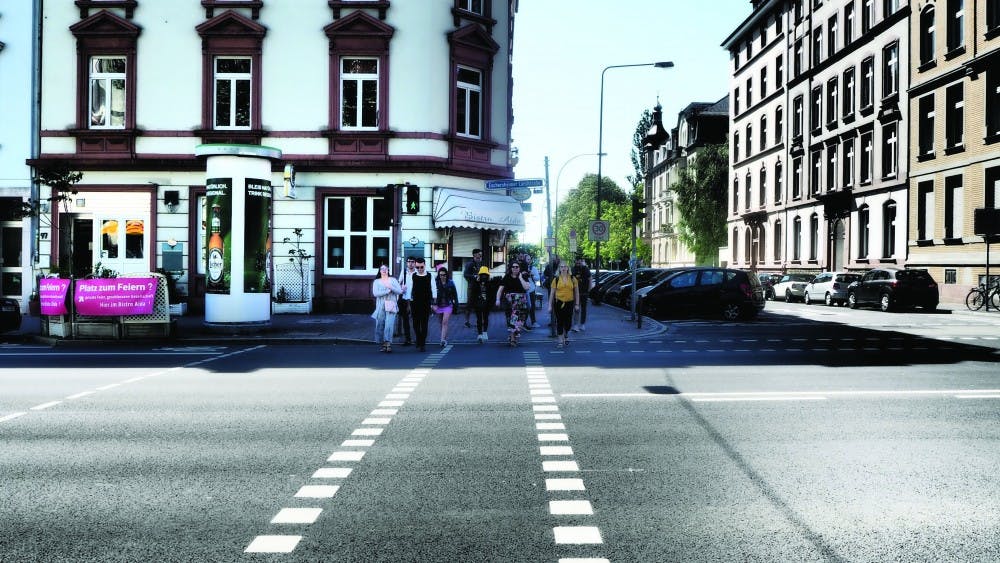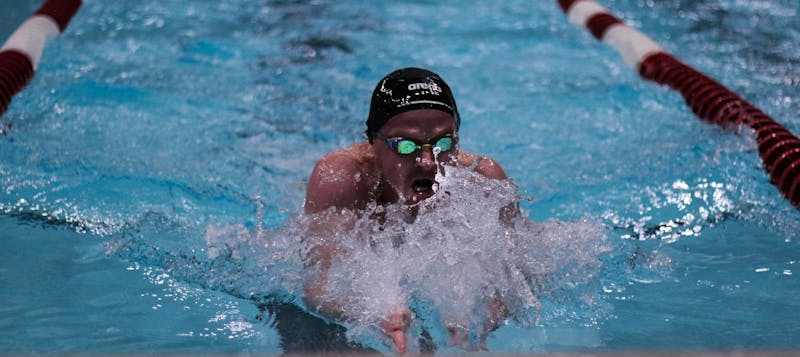Editor's note: Miles from Muncie is a Ball State Daily News series profiling Ball State students and their study abroad programs. If you have any suggestions as to who we should feature next, send an email to features@bsudailynews.com.
“I feel like you can learn significantly more by going somewhere else than you could in class. You can stare at pictures all day. You can read a byline, a dialogue or a biography on any day you want, but to actually go there and be there, present, was a different story.”
Michael Terronez, senior urban planning major, and Cassi Quissel, fifth-year architecture major, were two College of Architecture and Planning (CAP) students who had the opportunity to study abroad in Germany.
Natalie Yates, assistant professor of landscape architecture, said Germany is a great country to study abroad for architecture students because of its “rich architecture.”
“Germany is known for being in the forefront of design,” Yates said. “It has an extremely rich history and continues to be cutting-edge in design thinking. I also find that Germany is extremely welcoming to travelers and easy to navigate even if you don’t speak much German.”
Quissel, a student who had no prior out-of-country experiences other than traveling to the Caribbean Islands, said she applied for the trip because she “wanted a nice little dip into the European culture before [she's] on my own and have to navigate these countries without a professor helping [them] again,” while Terronez said he went because it has always been one of his goals in life.
“One of the deals I made myself before I came to Ball State was that I was going to find a school that would allow me to travel abroad in some sense,” Terronez said. “I think just being able to explore different cultures too is a big part of it. I have always loved learning about culture, and the way people do things in different places and why they do things — the food and really just generally, the culture of it.”
During their two-week trip, both students said they saw how people from a different culture lived their day-to-day lives with the most noticeable difference in transportation.
“You drive through Indiana and see diesels every other car and big trucks and tractors,” Quissel said. "Even for Chicago, you still see those bigger vehicles, but in Germany, all the vehicles are very small, compact and can fit in the tiniest places. People even parked on sidewalks while we were there.”
Another major difference Quissel saw involved one of the plazas in Munich. Quissel said on Friday nights, the streets filled with pedestrians who sang, played music, performed and drank, which was not something that happened throughout the week.
Observing the streets of various cities students traveled to throughout Germany helped the students create and finish their projects for the study abroad program.
Everyone applying for the trip had to submit a proposal with an outline of how they planned to accomplish their final project. Yates said most students wrote a short paper based on their educational goals, but some also produced detailed informational graphics or posters.
“Before the trip, [the students] did background research and set up planning for their visits,” Yates said. “While on the trip, they took field notes, did additional research and visited their areas of interest. After the trip, they submitted their papers and posters for review.”
Quissel and another member of the group examined the Berlin Wall for their project, and she said visiting this historical site sparked a conversation among her group members because it hit close to home for them.
“With all the conversations happening [in the United States] about the U.S.-Mexico border, we have not been put in a situation of what it's like to live with a wall,” Quissel said. “We, as a group, talked about how [Americans] move through spaces versus [people] in Germany.”
Conversations like these, Quissel said, helped her learn how to talk to people with non-American points of view but also showed her “there’s always other perspectives.”
Terronez said the trip to Germany was self-gratifying because he loves learning about different places, cultures and people.
“That's one of the main reasons why I’m in [urban] planning is because I just love people, so being able to see all these different kinds of people and understanding their perspective on things is very important,” Terronez said. “I think — to general people, to my own personal benefit [and] to my own success — I think I need to be able to understand people's perspective.”
After the more than 4,000-mile journey back home to Indiana, Yates said her students reflected on the major takeaways from the experience, both academic and personal.
“While the research projects are a great gateway through which to peer into a different culture, I believe the life experiences of just being out in the world are the most important,” Yates said. “[These experiences include] learning to navigate new places, figuring out how to communicate even if you don’t know the language well, not getting tripped up by unexpected delays or missing your stop on the train.”
Contact Kamryn Tomlinson with comments at kptomlinson@bsu.edu.





The Daily News welcomes thoughtful discussion on all of our stories, but please keep comments civil and on-topic. Read our full guidelines here.